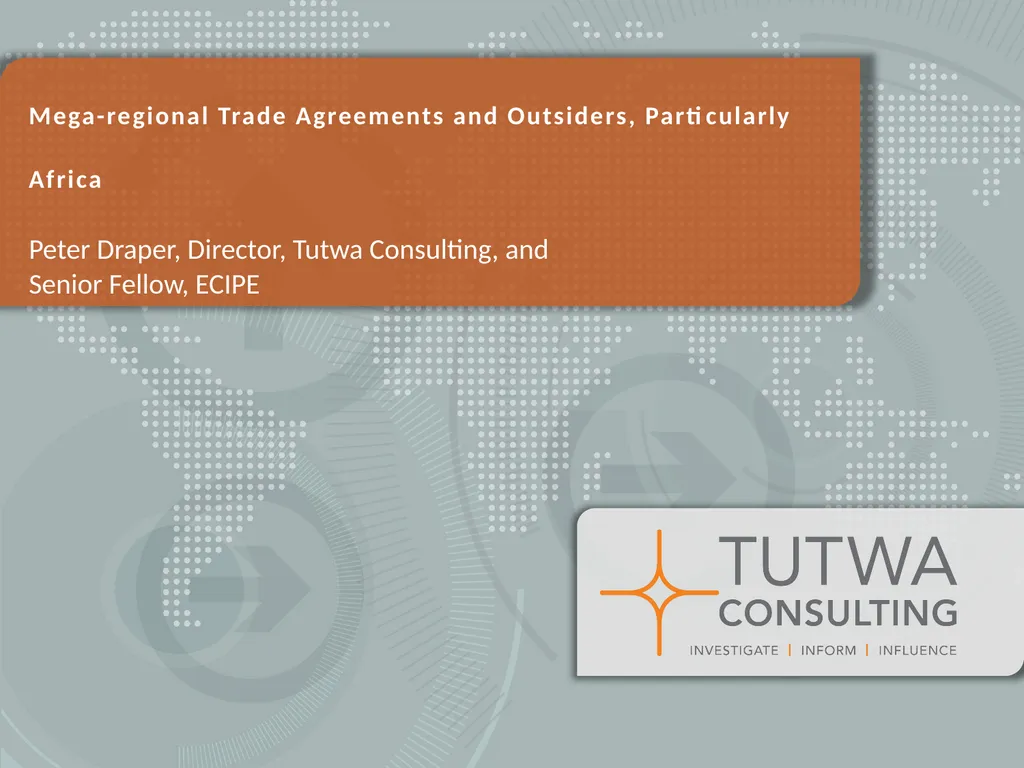
Mega-regional Trade Agreements and Outsiders,
Author: aaron | Published: 2025-05-24
Description: Mega-regional Trade Agreements and Outsiders, Particularly Africa Peter Draper, Director, Tutwa Consulting, and Senior Fellow, ECIPE Background Which mega-regionals matter most, and why? The regulatory agenda: A brief review Outcome
Download Presentation
Download the PPT/PDF: Download
Transcript:
Loading transcript…